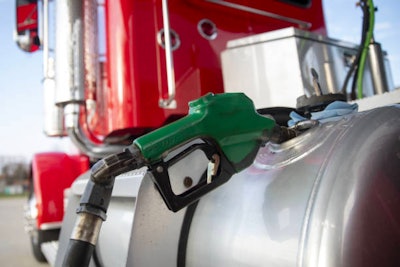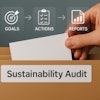
Consumer demand for sustainable goods has increased pressure on consumer packaged goods (CPG) and food companies to prioritize environmental responsibility. More than three-quarters of supply chain leaders expect consumers to prefer products that are sourced, made, packaged, delivered and destroyed in a socially responsible and environmentally friendly manner. And with the agri-food supply chain accounting for over 30% of annual greenhouse gas emissions, there’s plenty of room for improvement.
The good news is that reducing emissions is more attainable than ever. With electric vehicles (EVs) and other alternative energy options developing quickly, food industry shippers have nothing to lose — and much to gain — from implementing these technologies throughout their transportation networks.
While the onus to tackle carbon emissions reduction is often placed on carriers, shippers can help facilitate and accelerate the process. By having conversations with their core carrier base about sustainability expectations and adopting a data-driven approach in selecting new carriers, shippers have the power to effectively reduce emissions across the entire value chain.
A three-pronged approach to emissions reduction
Improving sustainability doesn’t happen overnight. It requires long-term planning, benchmarking, and collaboration with trusted carrier partners. Consider the following strategies to drive meaningful sustainability progress for your company, customers and consumers.
- Nurture carrier partnerships that can support your sustainability goals and targets A growing number of CPG and food industry shippers are turning to the EPA’s SmartWay program for insights on carriers’ fleets. With this resource, you can effectively identify and choose carriers that not only meet your transportation sustainability objectives, but also meet cost and efficiency requirements.
Look for partners with a proven track record of documenting and sharing emissions data through the SmartWay program. This will enable you to select carriers based on their sustainability performance across various transportation modes and equipment types, including cold chain.
But before you cut ties with longstanding partners who don’t participate in SmartWay, engage them in a candid conversation about your long-term emissions reduction goals. Provide advance notice that you plan to tighten emissions standards, which will require contracting with carriers that score favorably in the SmartWay program. By informing trusted partners that you value them and prefer to continue working together, you can actively involve them in your sustainability journey, fostering a stronger and more collaborative relationship.
- Implement a polyfuel strategy
EVs may dominate the eco-friendly transportation conversation, but they’re not the only low-carbon competitor to diesel fuel trucks. Many other alternative energy options exist, including hydrogen, renewable natural gas, renewable diesel, and biodiesel. CPG shippers aiming to optimize emissions reduction should consider all, or at least most, of these options.
Adopting a diversified energy approach, called a polyfuel strategy, is the most effective method to reduce dependence on a single fuel type and ensure sustainable food transportation in the long run. A polyfuel strategy enables you to take a proactive approach to alternative energy transportation and benefit from early progress.
With alternative energies still in their infancy, there are many unanswered questions about how these technologies will evolve. How will EVs perform in cold weather or over long hauls? What will the total cost of ownership for hydrogen be? Gaining experience with various alternative energies at an early stage will provide you with valuable insights that can guide your future decision-making processes.
- Find a trusted advisor
Reducing carbon emissions is an incremental process, and it's possible to make meaningful progress now, even as we wait for alternative energies to scale. But it requires accurate, comprehensive data about your transportation network so you can establish an emissions baseline and make strategic decisions that move the needle.
A strategic transportation emissions management partner can provide the insights you need to make meaningful progress toward your sustainability goals and targets. These data and technology partners should have the ability to provide lane-specific information, accommodating diverse equipment types such as refrigerated capacity and alternative energy options. With this comprehensive data, you can develop a robust polyfuel strategy that promotes early reductions in emissions while ensuring efficient and sustainable transportation practices.
Access to granular network data and strategic planning also makes it possible to pivot quickly when circumstances change. In the food industry, droughts and other weather events frequently impact the availability of key crops and ingredients. In these unpredictable scenarios, you’ll have the tools you need to strike a balance between cost and emissions impact when working with your procurement team to identify alternative sourcing options.
How sustainable is your transportation network?
Sustainability in transportation requires a multifaceted approach that encompasses long-term planning, collaborative partnerships, and innovative strategies. It’s a gradual process — and it’s never too soon to start.
CPG and food shippers have an outsized influence over emissions reduction progress and carrier behaviors. By nurturing carrier partnerships that align with your sustainability goals and leveraging the insights provided by programs like SmartWay, you can pave the way for a more sustainable future.



















